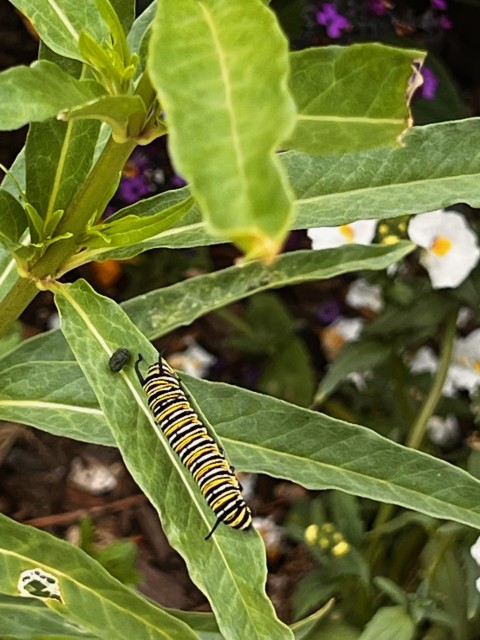Southern California church plants native species in its gardens, becomes part of its natural environment

A monarch butterfly caterpillar pearched on milkweed in St. Mary's Episcopal Church's garden. (Photo by Martha Simkins Davis)
Editor's note: This story is part of "Growing a Green Church," an ongoing series focused on churches' efforts to steward their buildings and land effectively in the context of a changing climate. The project is produced in collaboration with the Christian Century, Episcopal News Service, Faithfully Magazine, National Catholic Reporter and Sojourners, with support form the Solutions Journalism Network, and funding from the Fetzer Institute. Find more stories in the series here.
Over the past two years, St. Mary’s Episcopal Church, which sits on a hill four blocks away from the Pacific Ocean in Laguna Beach, California, has overhauled its property, adding drought-resistant native plants to its gardens and installing a drip irrigation system to avoid water runoff.
“Our natives live naturally in very dry conditions all of the time, getting only water and rain in the winter months (sometimes), and so they have evolved to live in low-water conditions,” Martha Simkins Davis, a parishioner and Orange County-certified master gardener who spearheaded the overhaul of the church’s gardens, said in an interview. “[And] they are drought tolerant and drought resistant.”





